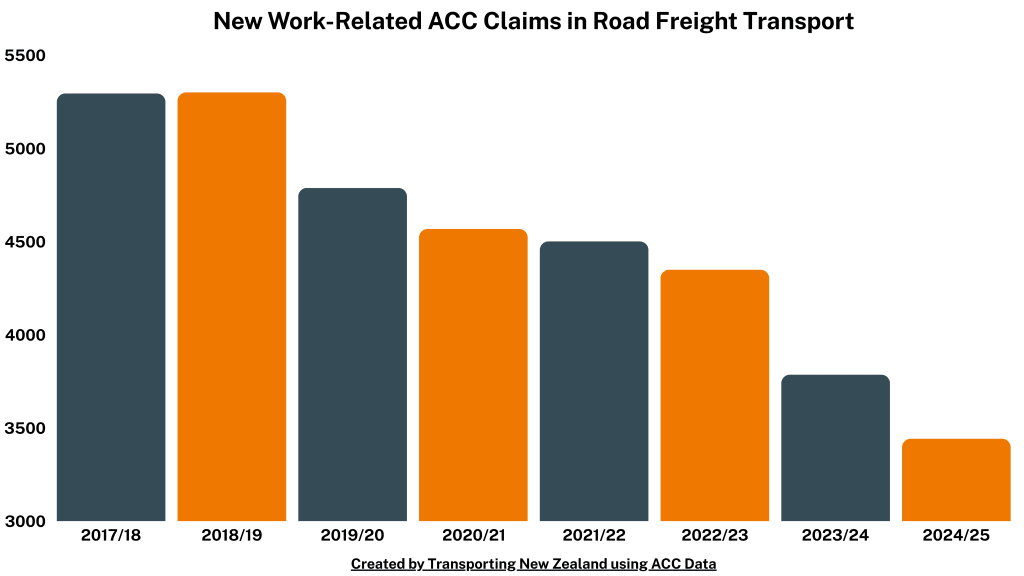Transporting New Zealand is welcoming a decline in road freight transport workplace injuries, saying it shows industry commitment to health and safety improvements.
Data released by ACC shows that annual injury claims have fallen by 35 per cent between 2018 and 2025, showing a consistent decline in workplace injuries despite growth in the national freight task. Claims fell across all 16 regions, with Northland and West Coast recording the largest percentage drops (56 per cent and 54 per cent respectively).
There were 3,442 new claims in the road freight transport industry in 2024/25, compared to 5,295 in 2017/18 – a reduction of 1,853 claims. Numbers declined year-on-year from 2018 to 2025.
Transporting New Zealand Chief Executive Dom Kalasih says the data is good news for road freight staff, businesses, and ACC levy payers.
“The data shows that road transport businesses are steadily improving workplace health and safety for its people, while moving more freight than ever.”
Kalasih says that the reduction in workplace injuries has been assisted by improvements in workplace culture, as well as technological improvements.
“In our 2025 National Road Freight Survey, the health, safety and wellbeing of staff was identified as one of the top three issues by 128 surveyed businesses. This data from ACC also indicates that road freight businesses and staff are making training, safe processes, and site and equipment design a priority.”
“Technological innovation will also be playing an important role, whether it’s automatic chain throwing and tensioning systems on logging trailers that avoid soft tissue injuries, or fatigue management technologies that help ensure people aren’t working while tired. Safety technologies can reduce physical strain on workers and mitigate safety risks, bringing injury rates down.”
Kalasih says that while the downward trend in workplace injuries is great news, there is more work that can be done.
“Transporting New Zealand would like to see these injury rates fall even further, and for injured people to be able to safely return to work sooner. The longer people spend away from their workplace, the less likely they are to successfully return to work.”
“We encourage our members to access Transporting New Zealand’s free consultations from leading health and safety consultants and talk to our membership managers for advice and guidance.”
“We also encourage road freight businesses to check out ACC’s Recovery at Work resources, to help support staff back into work following injury – demonstrated in our recent member video.”
ACC Road Freight Transport Industry Data 2024/2025 (1 April to 31 March)
Primary Injury Diagnosis by Category (Top four categories by claim frequency)
- Soft tissue injuries (sprains, strains, tears, and contusions)
- Laceration / Puncture / Sting
- Fracture / Dislocation
- Foreign Body in Orifice / Eye
Accident Cause (Top four categories by claim frequency)
- Lifting / Carrying / Strain
- Loss Balance / Personal Control
- Other / Unknown
- Pushed or Pulled

- Top 10 new work-related claims, by industry
Source: ACC – https://www.acc.co.nz/newsroom/media-resources/work-injury-statistics/)

- New Work-Related ACC Claims in Road Freight Transport
Source: Created by Transporting New Zealand using ACC data – https://www.transporting.nz/wp-content/uploads/2025/07/ACC-Transport-Industry-Data.xlsx





